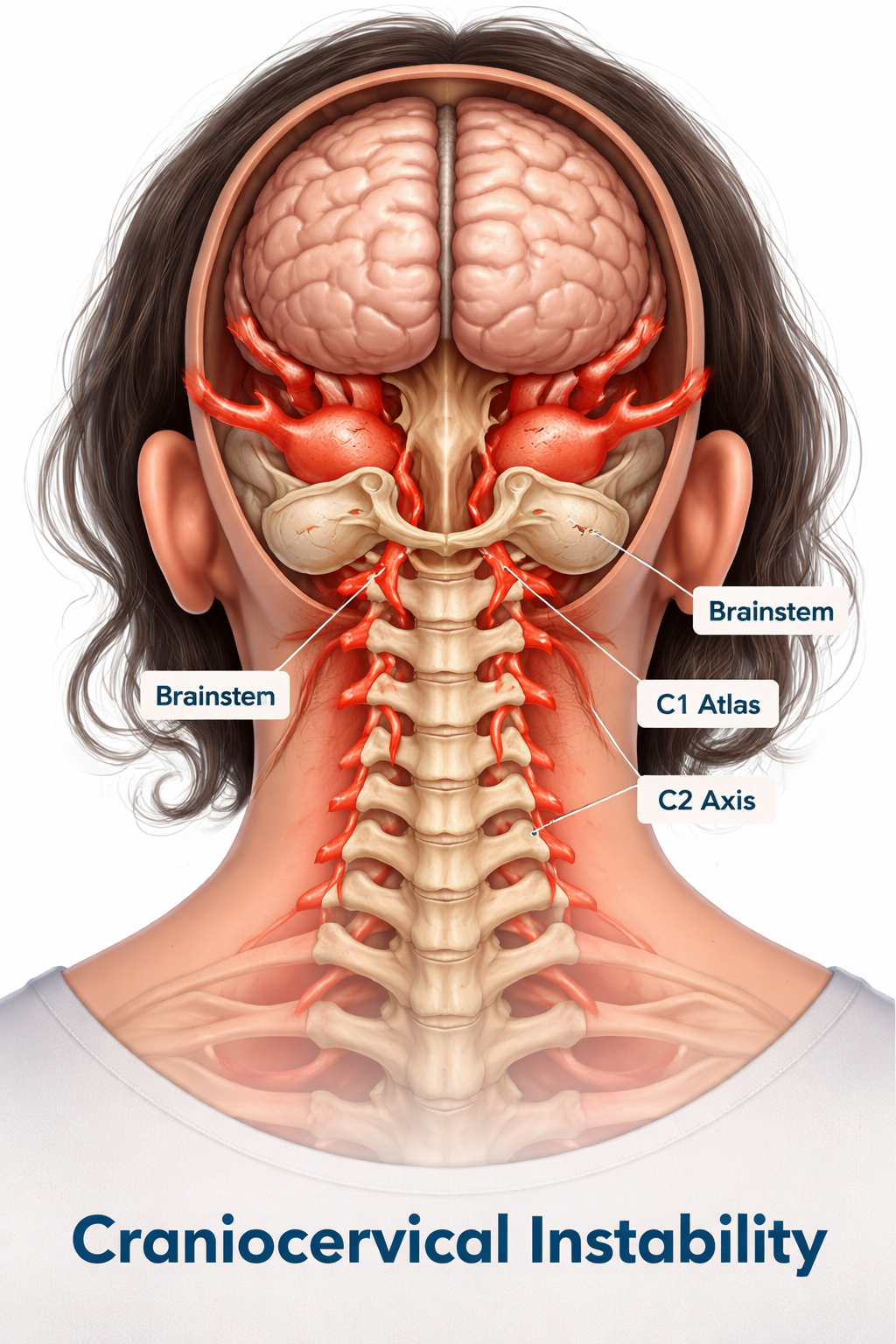
Magnesium for Migraines: Migraines can be debilitating, affecting millions of people worldwide. While medications are often prescribed to manage the pain and other symptoms, many individuals seek natural remedies for a more holistic approach to migraine management. One such remedy gaining attention is magnesium, an essential mineral that plays a key role in many bodily functions, including nerve transmission and muscle function. Magnesium deficiency has been linked to an increased frequency of migraines, making it an important component in managing and preventing these painful headaches.
At Lavender Family Chiropractic, we specialize in Upper Cervical Chiropractic care, which focuses on realigning the spine to improve overall health and well-being. In this article, we’ll explore how magnesium can help manage migraines, how Upper Cervical Chiropractic care complements this natural treatment, and how both can provide relief for those suffering from migraines.
Table of Contents
What Are Migraines?
Migraines are severe headaches that are often accompanied by other symptoms, such as nausea, vomiting, and sensitivity to light and sound. They can last anywhere from a few hours to several days and can significantly impact a person’s quality of life. While the exact cause of migraines is not fully understood, they are believed to be the result of abnormal brain activity affecting nerve signals, chemicals, and blood vessels in the brain.
Common Migraine Symptoms
- Intense headache on one or both sides of the head
- Nausea or vomiting
- Sensitivity to light and sound
- Visual disturbances such as auras, flashing lights, or blind spots
- Dizziness or lightheadedness
- Neck stiffness or pain
Migraines can be triggered by a variety of factors, including stress, hormonal changes, certain foods, dehydration, and even environmental changes. Identifying and managing these triggers can help reduce the frequency and severity of migraines.
How Magnesium Helps with Migraines
Magnesium is an essential mineral involved in over 300 biochemical reactions in the body. It plays a key role in regulating muscle and nerve function, blood sugar levels, and blood pressure, as well as in making protein, bone, and DNA. For people suffering from migraines, magnesium may be particularly beneficial due to its ability to support nerve and muscle function, reduce inflammation, and improve blood flow.
Magnesium Deficiency and Migraines
Several studies have shown that people who suffer from migraines are often deficient in magnesium. This deficiency can lead to increased nerve excitability, making the brain more susceptible to triggers that can cause a migraine. Low magnesium levels can also contribute to the constriction of blood vessels, which is thought to be one of the mechanisms behind migraine attacks.
How Magnesium Helps Prevent Migraines
- Regulates nerve function: Magnesium helps calm the nerves by reducing excitability, which can prevent the overstimulation that triggers migraines.
- Improves blood flow: Magnesium supports the relaxation of blood vessels, which can reduce the likelihood of migraine-related blood vessel constriction.
- Reduces inflammation: Migraines are often linked to inflammation, and magnesium’s anti-inflammatory properties can help mitigate this underlying factor.
- Supports neurotransmitter balance: Magnesium helps regulate neurotransmitters, such as serotonin, which plays a role in mood and pain perception. Balanced serotonin levels can help reduce the frequency of migraines.
Magnesium-Rich Foods
Including magnesium-rich foods in your diet is a natural way to increase your intake of this important mineral. Some examples of magnesium-rich foods include:
- Leafy green vegetables (spinach, kale, chard)
- Nuts and seeds (almonds, pumpkin seeds, sunflower seeds)
- Whole grains (quinoa, brown rice, oats)
- Legumes (black beans, lentils, chickpeas)
- Avocados
- Bananas
- Dark chocolate
While a balanced diet rich in these foods can help maintain adequate magnesium levels, some people may still need to supplement to reach optimal levels, especially if they suffer from migraines.
Magnesium Supplements for Migraines
For those who find it difficult to get enough magnesium through diet alone, supplements can be an effective option. Magnesium supplements come in various forms, including magnesium citrate, magnesium oxide, and magnesium glycinate. The recommended daily intake of magnesium for adults is around 400-420 mg for men and 310-320 mg for women. However, for migraine prevention, higher doses may be required under the guidance of a healthcare provider.
It’s important to note that taking too much magnesium can lead to side effects such as diarrhea, so it’s always best to consult with a healthcare professional before starting any new supplement regimen.
How Upper Cervical Chiropractic Care at Lavender Family Chiropractic Helps with Migraines
While magnesium plays a crucial role in managing migraines, it’s important to consider other underlying factors that contribute to migraine frequency and severity. One often overlooked cause is misalignment in the upper cervical spine, which can impact nerve function, blood flow, and overall body balance.
At Lavender Family Chiropractic, we focus on Upper Cervical Chiropractic care, a specialized form of chiropractic care that targets the alignment of the top two vertebrae in the spine—the atlas (C1) and the axis (C2). These vertebrae are located at the base of the skull and play a critical role in supporting the head and protecting the brainstem, which is responsible for controlling many of the body’s vital functions, including the nervous system.
The Connection Between Upper Cervical Misalignment and Migraines
When the atlas or axis vertebrae become misaligned, it can put pressure on the nerves and blood vessels in the neck, leading to impaired blood flow to the brain, increased nerve irritation, and muscle tension—all of which can contribute to the development of migraines.
Upper Cervical misalignment can also interfere with the body’s ability to regulate important neurotransmitters, such as serotonin, which plays a key role in pain perception and mood regulation. By correcting this misalignment, Upper Cervical Chiropractic care can help reduce the frequency and severity of migraines.
Benefits of Upper Cervical Chiropractic Care for Migraines
- Improved blood flow: By realigning the upper cervical spine, chiropractic care can restore proper blood flow to the brain, reducing the likelihood of blood vessel constriction and inflammation that can trigger migraines.
- Reduced nerve irritation: Upper Cervical adjustments help relieve pressure on the nerves, allowing them to function properly and reducing the likelihood of migraine-related nerve dysfunction.
- Decreased muscle tension: Misalignment in the upper cervical spine can lead to muscle tension in the neck and shoulders, which is a common migraine trigger. Chiropractic adjustments help relax these muscles, providing relief from tension-related headaches.
- Holistic approach: At Lavender Family Chiropractic, we take a holistic approach to health and wellness. We not only focus on spinal alignment but also consider other factors such as nutrition, posture, and stress management to help you achieve optimal health.
What to Expect from Upper Cervical Chiropractic Care at Lavender Family Chiropractic
At Lavender Family Chiropractic, we begin with a thorough assessment of your condition, including a detailed review of your medical history, a physical examination, and advanced imaging to identify any misalignments in the upper cervical spine. Once we have a clear understanding of your condition, we create a personalized treatment plan tailored to your specific needs.
Our Upper Cervical Chiropractic adjustments are gentle and precise, using minimal force to realign the spine without any twisting or cracking. This approach is safe and effective for people of all ages and can provide lasting relief from migraines and other related symptoms.
Combining Magnesium and Upper Cervical Chiropractic for Effective Migraine Management
When it comes to managing migraines, a combination of magnesium supplementation and Upper Cervical Chiropractic care can offer a powerful, natural approach to relief. By addressing both the nutritional and structural factors that contribute to migraines, you can reduce the frequency and severity of your headaches, improve your overall health, and enhance your quality of life.
The Synergy Between Magnesium and Upper Cervical Care
- Nerve function: Magnesium helps calm nerve excitability, while Upper Cervical Chiropractic care relieves pressure on the nerves, ensuring they function properly.
- Blood flow: Magnesium supports healthy blood vessel function, and Upper Cervical Chiropractic care improves blood flow to the brain by correcting spinal misalignment.
- Inflammation: Magnesium reduces inflammation, and Upper Cervical care helps reduce tension and irritation in the neck, which can contribute to inflammation.
By combining these two approaches, you are addressing the root causes of migraines—nerve dysfunction, blood flow issues, and inflammation—giving you the best chance for long-term relief.
Lifestyle Tips to Complement Magnesium and Upper Cervical Chiropractic Care
In addition to magnesium supplementation and chiropractic adjustments, there are several lifestyle changes you can make to support your migraine management:
1. Stay Hydrated
Dehydration is a common migraine trigger, so it’s important to drink plenty of water throughout the day. Aim for at least 8 glasses of water daily, and increase your intake during hot weather or exercise.
2. Manage Stress
Stress is a major trigger for migraines, so finding ways to manage it is essential. Incorporate stress-reducing activities like yoga, meditation, or deep breathing exercises into your daily routine.
3. Get Regular Exercise
Exercise helps improve blood flow and reduce tension in the muscles, both of which can help prevent migraines. Aim for at least 30 minutes of moderate exercise most days of the week.
4. Maintain a Consistent Sleep Schedule
Sleep disturbances can trigger migraines, so it’s important to maintain a consistent sleep schedule. Aim for 7-9 hours of sleep per night and try to go to bed and wake up at the same time each day.
Why Choose Lavender Family Chiropractic for Migraine Relief?
At Lavender Family Chiropractic, we specialize in providing personalized, patient-centered care that addresses the root causes of your health issues. Our focus on Upper Cervical Chiropractic care allows us to offer a holistic approach to migraine management, helping you find lasting relief from pain and discomfort.
By combining chiropractic adjustments with nutritional guidance, such as the benefits of magnesium for migraines, we provide a comprehensive treatment plan that supports your overall health and well-being.
If you’re ready to explore natural, effective solutions for migraine relief, contact Lavender Family Chiropractic today to schedule a consultation. Together, we can help you achieve a life free from the limitations of migraines.
Schedule With Us!
Lavender Family Chiropractic offers complimentary consultations to learn more about you. Click the link below!
https://intake.chirohd.com/new-patient-scheduling/724/lavender-family-chiropractic
Visit our Website!
To learn more about us go to http://www.chiropractorsarasotaflorida.com
We also service Bradenton, Lakewood Ranch, Palmetto, Ruskin, Tampa, St. Pete, Ellington, Venice, Osprey, Myakka Village



